The following example shows how selected objects are morphed using the two-surface morphing method.
The morph is defined by:
 Control surface
Control surface
 Reference surface
Reference surface

The extruded H surface is morphed by the difference between the flat reference surface and the cylindrical control surface. For each point on the reference surface, there is a corresponding point with the same 2D parametric coordinates on the control surface. This is used to define how to reshape the H.
If the points on the selected objects lie on the reference surface, they are moved to the corresponding point on the control surface.
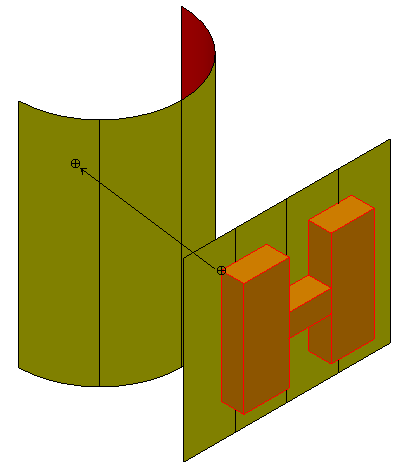
If the points on the selected objects don't lie on the reference surface, the Normal Offsetting option determines where the points will move.
The morphing method finds the closest point on the reference surface for each point on the selected objects and the offset between the two points.
 Closest point on the reference surface.
Closest point on the reference surface.
 Point to be morphed.
Point to be morphed.
 Offset.
Offset.
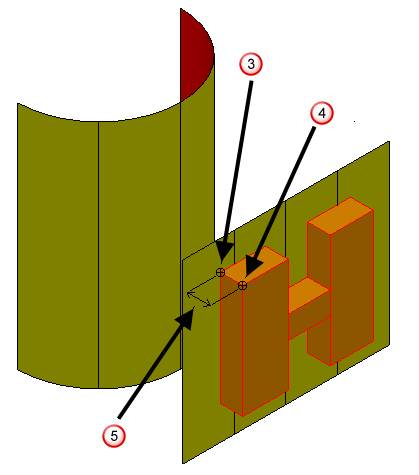
The point on the reference surface has a corresponding point with the same number on the control surface.
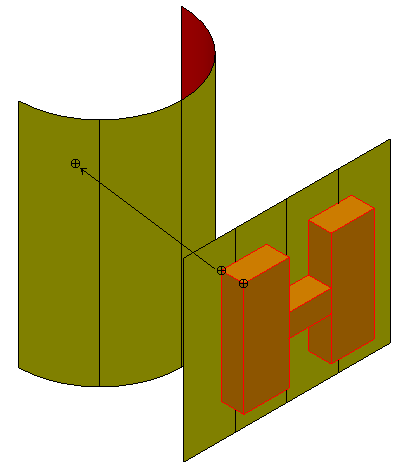
If the Normal Offsetting option is deselected, the point is moved so that it is offset by the same amount from the point on the control surface, reduced by any decay that you may have defined.
 Offset on reference surface.
Offset on reference surface.
 Position of point if there is no decay.
Position of point if there is no decay.
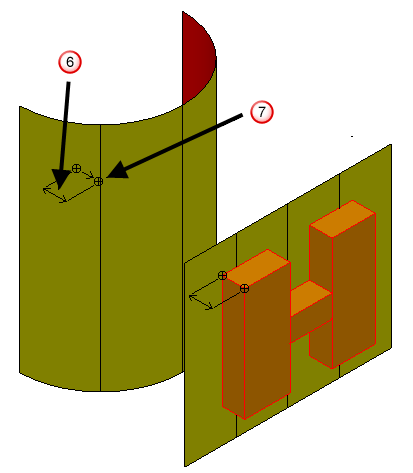
In this case, the model appears as follows:
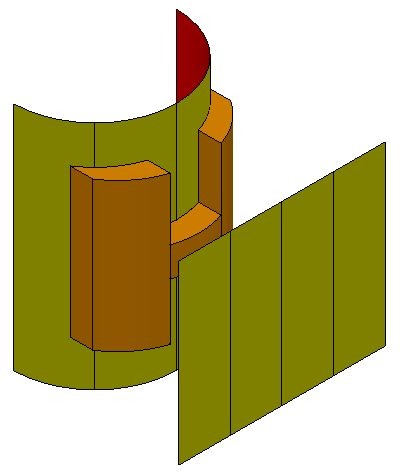
If the Normal Offsetting option is on, points are offset along the surface normal on the control surface by their distance from the reference surface, so that the model appears to be bent to follow the control surface  .
.

In this case, the surface appears as follows:
